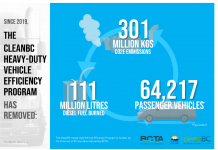With summer now in full swing, specialized carriers, and to a certain extent, all carriers, have started moving fall and winter commodities as stores and warehouses prepare for the winter season. Now is a good time to start preparing ourselves and our equipment for the colder weather that lies ahead.
First and foremost, check the effectiveness of your coolant. You can use a simple coolant checking tool, available in any automotive store, to ensure that your coolant is effective down to at least -50°C. It is highly recommended to have a flush and fill performed on your cooling system, using a quality winter coolant, during your next truck service. The last thing you want is for your coolant to freeze up during winter, as it can cause severe damage and potentially leave your truck in the shop for an extended period while the engine is rebuilt.
Develop the habit of draining your air tanks daily to remove any water. While the air dryer will remove most of the water, there will always be some residual water in the tanks when air is under pressure. If this water freezes, it can lead to line blockages or problems with the brakes and valves.
Now is also a good time to inspect your tire chains. Ensure that you have an adequate supply of chains and check them for missing or broken links, as well as worn, bent, or missing grips. Additionally, make sure you have a few bungee cords to take up the slack and a chain tightening tool.
You should carry enough chains to cover at least 6 tires, which is the minimum requirement in British Columbia. This includes four drive tires and two trailer tires at a minimum. You can use a pair of triples for the drives and a pair of singles for the trailer or four singles on the drives and two on the trailer. If you have never installed tire chains before, now would be a good time to learn while the weather is warm and you have some time for practice. Trust me, you don’t want to find yourself in a chain-up area in the middle of nowhere with no idea how to install chains. It took me nearly 3 hours to install 2 triples on my drives to get over Kootenay Pass! When chaining the tractor, if you use triples, install them on the front drive axle. If you’re using 4 singles, they can be installed on the 4 outer tires on both axles. Regardless of the type of chains you use, do not exceed 25 km/h when the chains are on, and be sure to engage your full power divider axle locks. In the extremely unlikely event that you need to chain up a steering tire, never chain up the driver’s side steering tire. Doing so can cause severe damage to your steering gear if the chain breaks.






















